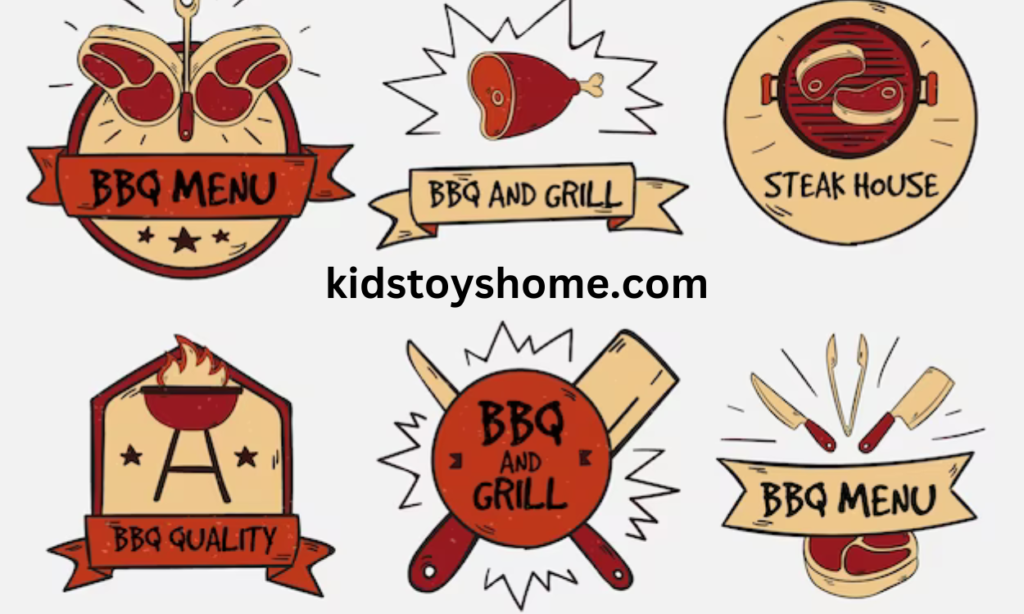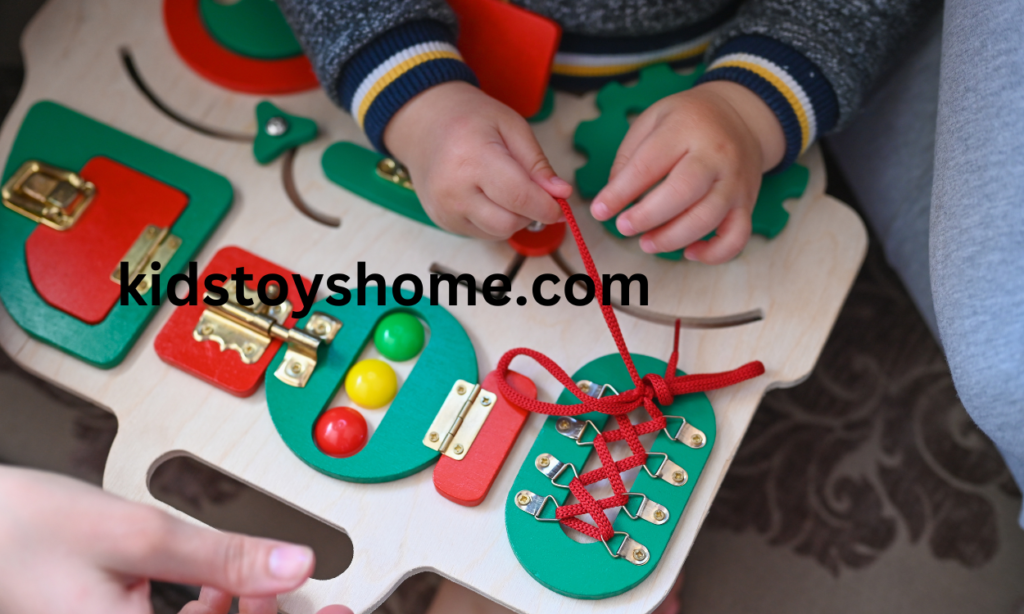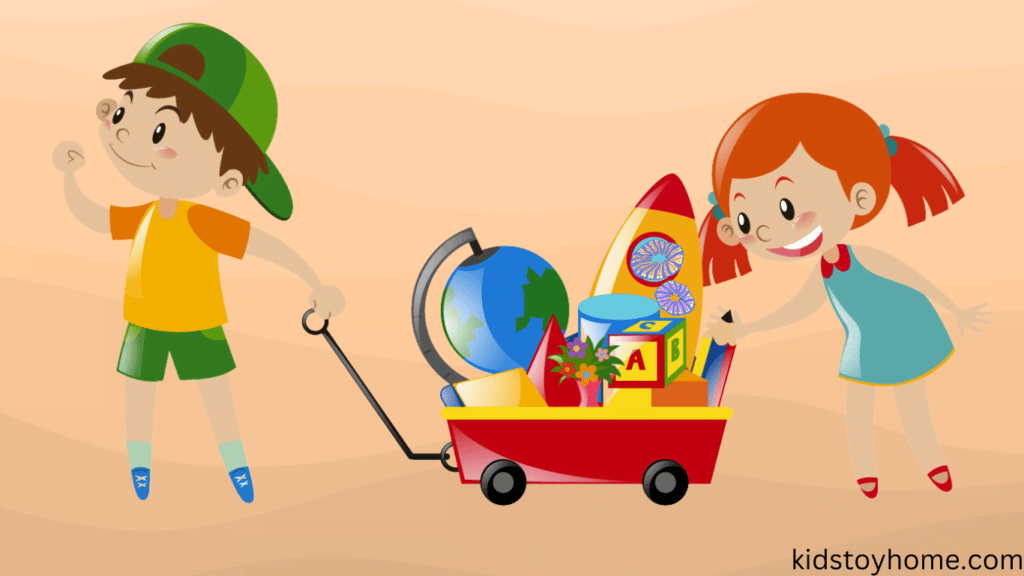The time has now arrived when parents and teachers need to find the best ways to stimulate their children’s instincts for smartness and active brains in this fast-moving world. Ensuring the best preparation for their children’s future is very important in today’s highly competitive academic environment coupled with escalating rapid technology. The requirements of the present generation cannot be fulfilled by traditional toys.
Thankfully, new educational toys are designed to increase children’s IQ levels. These toys do more than entertain—they provide valuable learning experiences that help brain development and improve cognitive functions. They offer fun and effective ways for children to develop critical thinking and problem-solving skills.
Please keep reading to learn how these modern toys can help your child’s cognitive growth and reach their full potential. We’ll look at different types of toys, their unique features, and the specific skills they help develop.
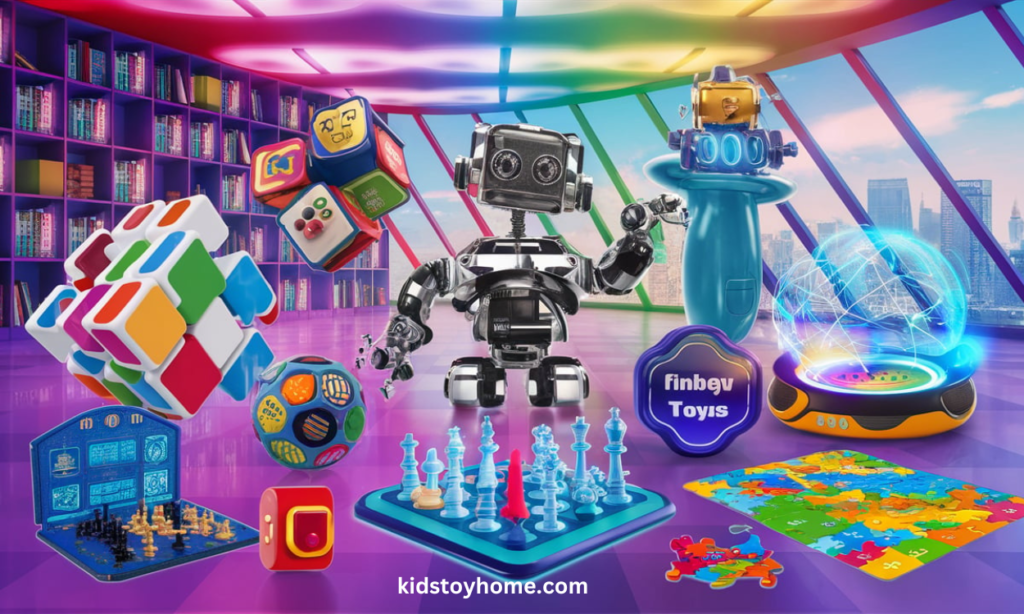
The Importance of Toys in Childhood Development
Toys are not just play toys; indeed, they are essential learning tools. Most of the toys assist in motor skills, problem-solving skills, and overall social transactions. The right kind of toys can even stimulate cognitive functions and advance memory, attention, and IQ.
Pegboard Puzzles
Pegboard puzzles are also known as educational toys. These consist of a board with different pegs along with their respective holes in which these pegs will fit in the corresponding holes. This activity further strengthens the child’s fine motor skills and hand-eye coordination.

How to Use?
Children use these puzzles by picking up pegs and placing them into their appropriate holes on the board. Because the activity of picking the pegs so that they are aligned with the holes on the board and placing them into the holes induces skill, children can be involved with this very effective method.
IQ Benefits
Pegboard puzzles are action games that can be employed to teach children the various sizes and shapes of objects, enhancing spatial awareness. The skills developed in the process include mathematical and analytical ones, bringing about higher IQ levels.
Nesting Cups or Blocks
Nesting cups or blocks are collections of cups or blocks of a size that allow them to be fitted inside one another. They are very effective in teaching spatial awareness and size gradation.
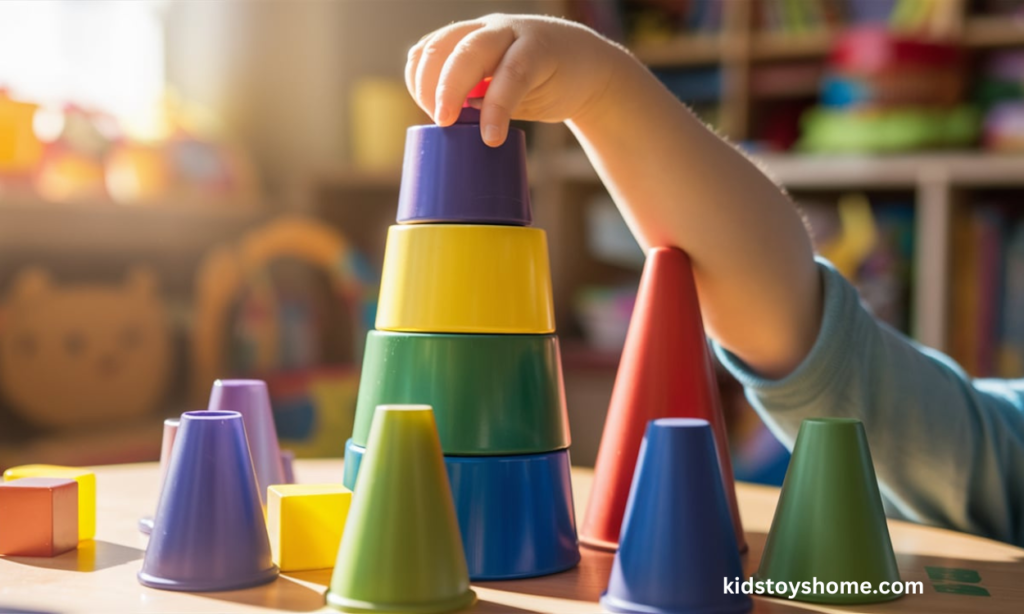
How to Use?
The children can stack the cups or blocks one inside another or build towers placing larger ones at the bottom and putting one smaller on top. This, in turn, teaches them to size relationships and balance.
IQ Benefits
Nested cups or blocks also develop problem-solving ability by attempting to figure out how to nest or stack them appropriately. This enhances logical and analytical thinking, essential components of higher IQ levels.
Buckets with Holes for Different-Shaped Blocks
These toys consist of a bucket filled with different shapes of holes and some blocks with the same shapes, where children must determine which holes go along with which block.
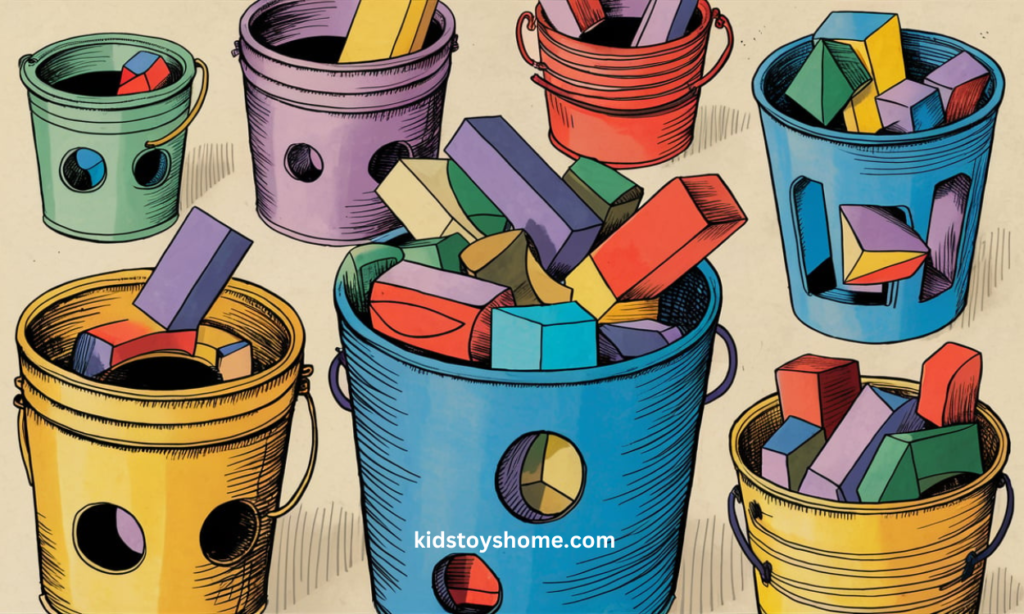
How to Use?
Children pick up blocks and try to put them through holes in a bucket, trial and error until they find the right fit, which boosts their cognitive skills.
IQ Benefits
Playing with buckets and shaped blocks encourages children to associate the holes with the shapes that would fit into those holes. Such activities enhance problem-solving and logical thinking skills and thus increase IQ levels.
STEM Kits
These are scientific, technological, engineering, and mathematics toys to educate learners on various building materials, interactive elements, and instructional guides.
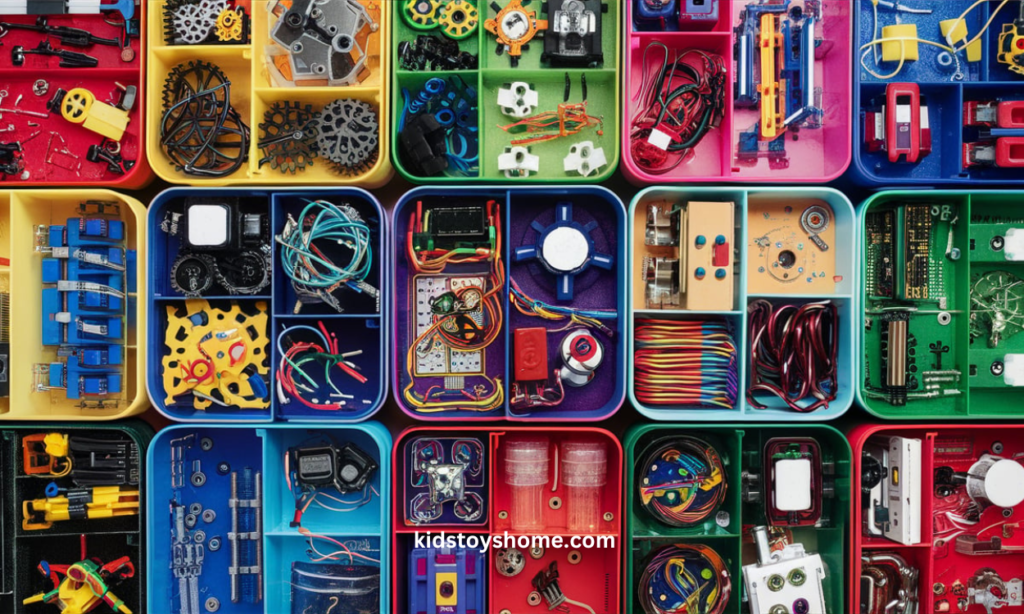
How to Use?
STEM kits offer a hands-on approach to learning, enabling individuals to actively engage with scientific, technological, engineering, and mathematical concepts. They serve as valuable educational tools, fostering curiosity and innovation.
IQ Benefits:
It encourages problem-solving and critical thinking and enhances understanding of STEM subjects through hands-on experience.
Coding Robots
Robots that can be programmed using simple coding languages. They often come with interactive apps and games.

How to use it?
Power on the coding robot and connect to your computer or tablet via Bluetooth. Install and launch the coding software or app provided by the robot. Follow the on-screen instructions to start programming simple commands and sequences.
IQ Benefits:
It teaches logical thinking and sequential planning, improving skills in technology and programming from an early age.
Musical Instruments
Kid-friendly versions of instruments, like keyboards, guitars, and drums, often come with tutorial apps or built-in lessons.
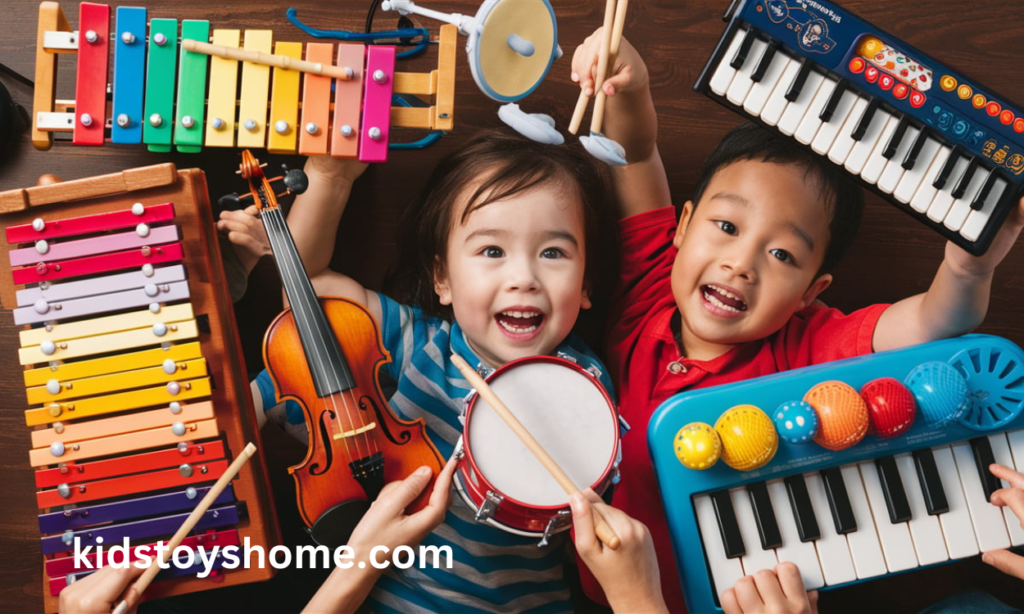
IQ Benefits:
It enhances auditory discrimination and fine motor skills and improves memory and rhythmic abilities.
Memory Games
Cards, boards, or electronic devices that require players to remember and match items Adjustable difficulty levels to cater to different age groups.
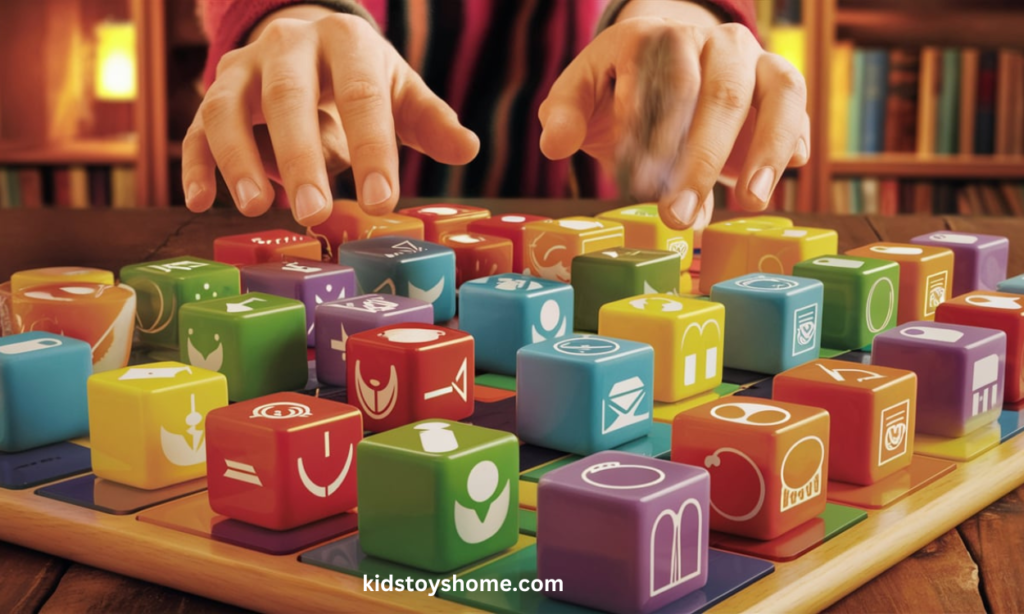
IQ Benefits:
Strengthens memory and recall abilities. It encourages concentration and cognitive flexibility.
Construction Sets
Building blocks, magnetic tiles, and other materials for constructing various structures come with design guides and challenges.
IQ Benefits:
It enhances creativity and engineering skills and develops spatial intelligence and coordination.
Expert Opinions and Studies Supporting the Effectiveness of These Toys
Research indicates that interactive and educational toys play a significant role in cognitive development. According to a study published in the Journal of Applied Developmental Psychology, children with STEM toys show higher problem-solving skills and cognitive abilities.
Educational psychologists also advocate using musical instruments to boost IQ levels, citing improved neural connections and memory retention.
FAQs about “Toys to Increase Kids Intelligence”
What age group are these toys appropriate for?
Most of these toys are designed for children aged three and up. However, it’s essential to check the manufacturer’s recommendations for each toy to ensure suitability for your child’s age and developmental stage.
Are these toys safe for children?
These toys are made with child safety in mind, using non-toxic materials and adhering to safety standards. Always supervise young children during play to prevent accidents.
How often should children play with these toys?
Regular play is beneficial. Integrating these toys into daily activities ensures consistent cognitive stimulation. Aim for at least 30 minutes to an hour of playtime with educational toys daily.
Can these toys be used in educational settings?
Many educators incorporate these toys into their curriculum to enhance learning experiences. They are excellent for group activities and individual learning sessions.
Do these toys require adult supervision?
While older children might use some of these toys independently, younger children benefit from adult guidance to maximize the educational value and ensure safety.
How to Incorporate These Toys into Daily Activities
For Parents
- Designate Playtime: Set aside specific times each day for educational play.
- Interactive Sessions: Engage with your child during play to guide and challenge them.
- Rotate Toys: Keep the play experience fresh by rotating different educational toys.
For Educators
- Integration into Curriculum: Use toys as teaching aids during lessons.
- Group Activities: Encourage collaborative play to develop social and teamwork skills.
- Observation and Assessment: Monitor how children interact with the toys and assess their cognitive progress.
Conclusion
The latest toys designed to boost children’s IQ levels are more than just entertaining—they are potent tools for cognitive development.
From STEM kits to musical instruments, these toys provide diverse learning experiences that enhance problem-solving skills, memory, and overall intelligence.
Parents and educators can significantly contribute to a child’s intellectual growth by thoughtfully incorporating these toys into daily routines.
